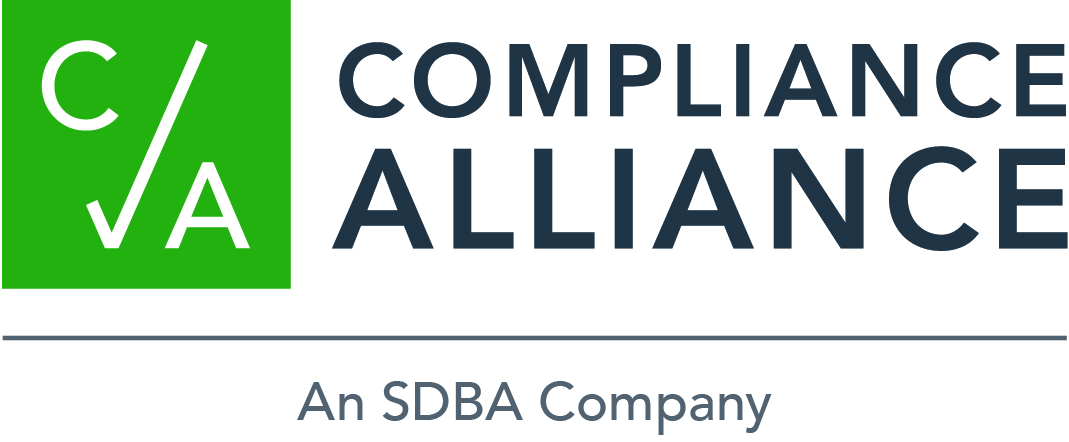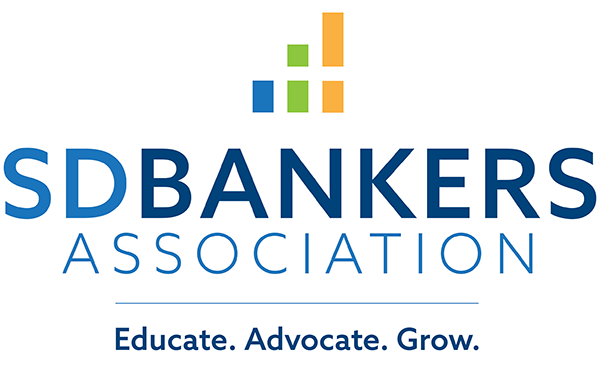|

Ag Bankers Working with the State's Producers, SDBA Ag Credit Conference to Start Next Week
Despite the cold, snowy weather, ag producers are getting ready to head into the fields as soon as they can. Ag bankers have been working with producers to help finance their operations this year, SDBA President Curt Everson recently told WNAX Radio.
"There has been a considerable amount of restructuring going on of operating debt maybe current year or short-term operating loans being restructured into the longer-term debt just to try and create a little better cash flow situation for producers," Everson said. "So bankers have been working on those kinds of things customer by customer."
Land values have dropped over the last year, according to SDSU, with average crop ground in the state at about $3,900 an acre--a five percent drop from the previous year. Everson says most banks don’t use the sales price of land in their financial statements.
Everson says low grain prices also contribute to the strain on farm operations cash flow. Listen to Everson's sound bites.
The SDBA's 2018 Agricultural Credit Conference will be held April 11-13 in Pierre. There is still time to register. View the agenda and register.
ABA Report: Ag Lending Grows 6 Percent in 2017
The nation’s farm banks increased agricultural lending by nearly 6 percent, or $5.9 billion, to $106 billion in 2017, according to ABA's annual Farm Bank Performance Report released Monday. With non-performing loans falling to a pre-recession level of 0.52 percent of total loans, asset quality also remained healthy among the nation’s 1,847 farm banks.
“We’re starting to see the effects of a weaker ag sector, but farm banks are still strong and ready to assist their farm and ranch customers,” said ABA VP Brittany Kleinpaste. “Banks continue to meet the credit needs of both large and small farms and remain the largest supplier of agricultural credit in the U.S.”
More than 96 percent of farm banks were profitable in 2017, with more than 55 percent reporting an increase in earnings, according to the report. While total net income was down 3.1 percent to $4.7 billion from the previous year, farm banks hold a positive outlook for the future as unnecessary regulatory burdens are addressed and their customers and communities begin to benefit from the new tax law.
Farm banks--defined by ABA as banks with ratios of domestic farm loans to total domestic loans greater than or equal to the industry average--also continued to build high-quality capital throughout 2017. Equity capital increased 5.6 percent to $48.4 billion, while Tier 1 capital increased by $2.1 billion to $45.7 billion. In 2017, farm banks added more than 1,600 jobs, a 1.9 percent increase, and employed more than 88,000 rural Americans. Since 2007, employment at farm banks has risen 25.3 percent. Read the report.
Registration Deadline Extended for Dakota School of Lending Principles
The deadline to register for the SDBA's Dakota School of Lending Principles has been extended to April 18, and the fee for late registrations will be waived.
Hosted by the SDBA and co-sponsored by the NDBA, the Dakota School of Lending Principles on April 24-27 in Aberdeen is a learning event with one foot grounded in the classroom and one foot in the bank. This school allows students to learn the theory and process of basic lending and then put this knowledge to work in actual nuts and bolts sessions.
The school focuses on four loan modules: consumer lending, real estate lending, analyzing small business loans and loan documentation, and agricultural lending. Attendees will learn the lending process by studying elements applicable to each loan type: terminology, the application process, interviewing, investigation, credit analysis, loan structure, decision communication and selling. Case studies and exercises provide a hands-on learning experience.
Bankers can attend the entire four-day school or select individual modules. Banks may also purchase one registration for the entire school and send a difference employee for each module. Learn more and register.
Treasury Issues Recommendations for CRA Modernization
As bank regulators work toward modernizing the Community Reinvestment Act--with an advance notice of proposed rulemaking expected from regulatory agencies in the days ahead--the Treasury Department on Tuesday issued a memorandum to the agencies highlighting several recommendations for updating and improving administration of the 40-year-old law.
Treasury’s recommendations focused on four key areas, including redefining geographic assessment areas, increasing transparency around the rating process, improving the examination process and incentivizing CRA performance. Acknowledging numerous changes in banking law and technology that have taken place since CRA’s enactment in 1977, Treasury recommended that the agencies provide greater flexibility when determining CRA assessment areas, expand the range of products that are eligible to receive CRA credit and consider alternative delivery channels when conducting CRA evaluations, among other things.
“Adjustments that enhance the transparency, consistency and predictability of the supervisory process--and that recognize the many ways banks meet the credit needs of the communities they support--will help institutions better serve all customers and promote economic growth,” said ABA President and CEO Rob Nichols. “We’re pleased that this report recognizes changes in mobile technology and the many innovations banks have developed to serve their customers.”
ABA has concerns over certain recommendations that could potentially constrain the ways that banks serve their communities by imposing numerical performance metrics and frequent reporting requirements and that could inadequately recognize banks’ financial education work. The association remains heavily engaged in the CRA modernization effort. The Treasury report reflects key issues raised by ABA in meetings between ABA staff and Treasury officials, and many of the recommendations echo ideas put forth in a white paper by ABA last December.
FinCEN Publishes Long-Awaited FAQs on Beneficial Ownership Rule
The Financial Crimes Enforcement Network on Tuesday published a long-expected set of frequently asked questions on expanded customer due diligence requirements under the Bank Secrecy Act, including a new requirement for banks to identify and verify legal entities’ “beneficial owners” when accounts are opened. The customer due diligence rule’s mandatory compliance date is May 11.
Supplementing a set of FAQs issued in 2016, the 26 new FAQs respond to many questions that have been raised by the industry since the rule was adopted. Now that the FinCEN FAQs have been issued, the federal banking agencies are expected to release their examination procedures in the coming days.
ABA is reviewing the FAQs and will publish a staff summary as soon as possible. Meanwhile, ABA has been developing its own FAQs for bankers. Once coordinated with the FinCEN guidance, ABA will publish more FAQs as an additional resource for ABA members.
ABA Wins on Two Counts in Credit Union Field of Membership Lawsuit
A U.S. District Court judge last week invalidated a portion of the National Credit Union Administration’s field of membership rule that further expanded the already loose fields of membership from which federal credit unions can draw their customers. The rule, adopted in late 2016, allowed community credit unions--which Congress by statute limited to serving a single “well-defined local community, neighborhood, or rural district”--to serve large regions encompassing multiple metropolitan areas with populations in the millions.
Judge Dabney Friedrich declared invalid and vacated two aspects of the rule that ABA challenged in a lawsuit against NCUA: the inclusion of Combined Statistical Areas with fewer than 2.5 million people, and the dramatic expansion of a “rural area” to include areas with up to 1 million people--which in some cases could encompass entire states. She noted that NCUA’s actions in these areas “are manifestly contrary to the [Federal Credit Union] Act.”
“It never made sense that an entire region could be declared a ‘local community’ or that an entire state could be declared a ‘rural district,’ and today’s ruling recognizes that fact,” said ABA President and CEO Rob Nichols. “Today’s decision also affirms what we have known for years--NCUA won’t hesitate to push the boundaries of reason for the credit union industry even at the expense of taxpayers, small banks and the communities those banks serve.”
ABA also challenged the ability of credit unions to serve Core-Based Statistical Areas without serving the urban core that defines the area, and the ability to add “adjacent areas” to existing well-defined local communities on a case-by-case basis. Judge Friedrich upheld both of those provisions, concluding that “neither [are] in excess of the agency’s statutory authority nor arbitrary and capricious.” She added, however, that “the approach to Core-Based Statistical Areas pushes against the outer limits of reasonableness.”
Nichols expressed disappointment in the court’s decision to uphold these provisions, which he said “allow credit unions to cherry pick communities and ignore serving people of modest means, which is fundamental to the original purpose of the credit union tax exemption.”
ABA has been successful in three previous lawsuits challenging the NCUA, arguing repeatedly that the regulator has overstepped its limits. The association said it will continue its pursuit of a level playing field with credit unions both in and outside the courts, including leveraging recent comments by several tax experts and a letter from Senate Finance Committee Chairman Orrin Hatch (R-Utah) to NCUA that question whether the industry’s tax exemption remains relevant. Read the opinion. For more information, contact ABA's Dawn Causey, Tom Pinder or Brittany Kleinpaste.
Agencies Finalize Technical Call Report Revisions
The federal banking agencies last Friday finalized additional technical revisions to the Call Report, which will take effect June 30, 2018. The revisions--which are part of the agencies’ ongoing effort to reduce Call Report burden on banks--will remove or consolidate several data items and add or raise certain existing reporting thresholds in three versions of the report.
To help bankers understand the changes, the agencies will hold a webinar on Thursday, April 5, at 12 noon CDT. The webinar will also address revisions to the reporting of equity securities taking effect March 31, 2018, instructional changes resulting from the agencies' regulatory capital transitions rule and reporting implications of the recently enacted tax law.
ABA has been has been heavily involved in the Call Report revision process, which the agencies initiated in response to ABA comments submitted through the Economic Growth and Regulatory Paperwork Reduction Act process. The association has facilitated numerous conversations between bankers and regulators to explain Call Report burdens and offer suggestions for its improvement. Read more. Learn more about the webinar.
FDIC Issues Technical Corrections to Deposit Insurance Assessment Rules
The FDIC is today issuing a final rule making technical amendments to its rules governing deposit insurance assessments. The amendments correct a drafting error and clarify that the FDIC will begin providing assessment credits to small banks when the Deposit Insurance Fund ratio is at least 1.38 percent. They also remove a Call Report entry from the deposit insurance pricing methodology and reinsert capital ratios and categories used to calculate assessment rates.
"The FDIC believes that the amendments will have little or no effect on the deposit insurance assessments for insured depository institutions, and any potential effect would result in lower assessments," the agency said. Read the final rule.
 Question of the Week Question of the Week
Question: Are we allowed to provide a copy of the determination we have completed that is provided by our third party, if the borrower asks for it? And if so, do we have to get a signature saying it was received?
Answer: Yes—it’s not a statutory requirement, but the bank is allowed to provide a copy of the determination to the borrower. This may be used to provide it to the insurance agent so as to minimize discrepancies between the determination and the borrower’s policy. The bank would also need to make the determination available to the borrower in case of a special flood hazard determination review, which has to be requested jointly by the bank and the borrower.
If the bank does provide the determination form to the borrower, there’s not a specific signature requirement in the rules.
Not a Compliance Alliance member? Learn more about membership with Compliance Alliance by attending one of our live demos:
Compliance rules and regulations change quickly. For timely compliance updates, subscribe to Compliance Alliance’s email newsletters.
Compliance Alliance offers a comprehensive suite of compliance management solutions. To learn how to put them to work for your bank, call 888.353.3933 or email.

SDBA eNews Archive
View past issues of the SDBA enews
Advertising Opportunity
Learn more about sponsoring the SDBA eNews.
Questions/Comments
Contact Alisa DeMers, SDBA, at 800.726.7322 or via email.
|


 Question of the Week
Question of the Week